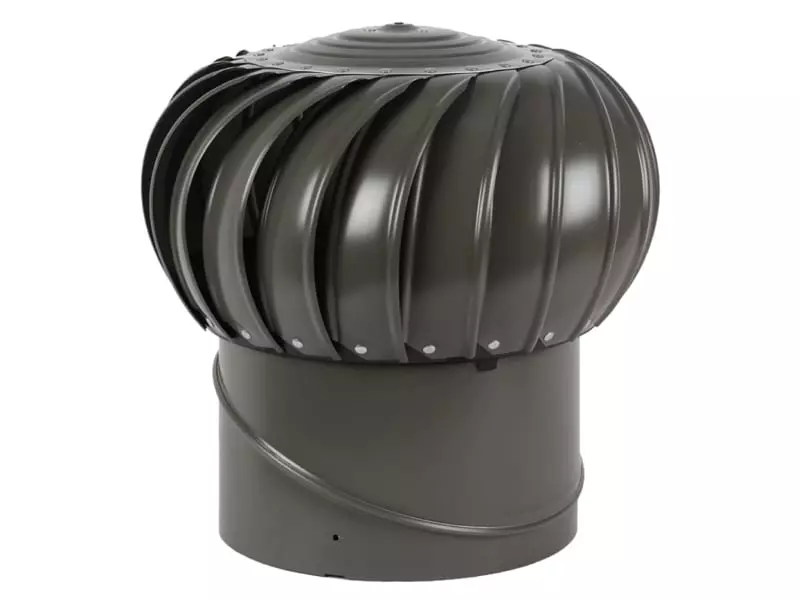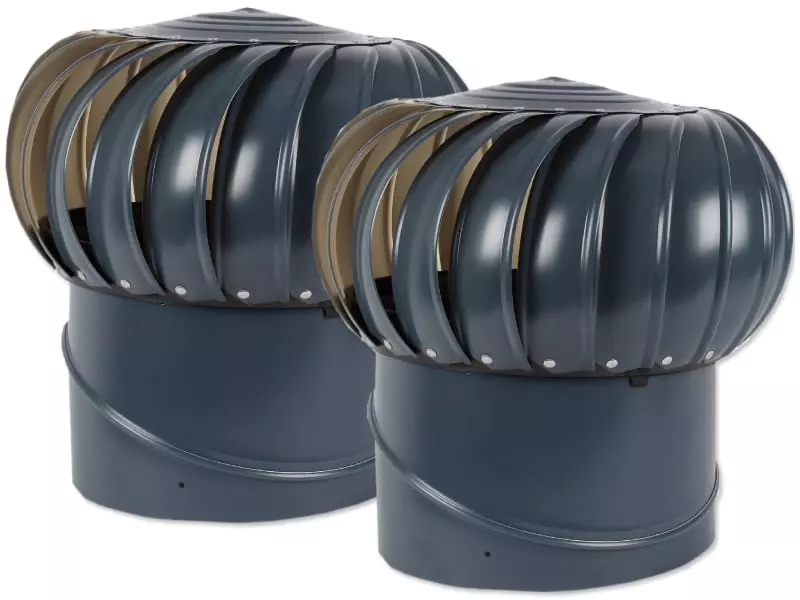The Benefits of Whirlybird Roof Vents in Australia
What are whirlybirds?
Whirlybirds are a unique variety of ventilators that are typically installed on rooftops. They are mostly wind-driven and exhaust the stale indoor air with fresh air from the outdoors. They are also called ‘turbine vents’ because many whirlybird models are completely wind-driven, requiring no energy to operate. Whirlybirds are broadly categorized into two types: passive and active.
Passive whirlybirds depend upon the wind currents to operate – even a small amount of wind is usually enough to rotate the smaller models. Active whirlybirds rely on a mechanical source of energy to operate, so they can operate constantly, with or without the presence of wind outdoors.
How do whirlybirds work?
Whirlybirds are shaped like a dome or a bulb. On their external surface, they have fins with cavities. When the fins rotate, they create a vacuum which effectively sucks in air from the outdoors while expelling the stale air from indoors. Passive whirlybirds stay put when there is no wind and operate only when the wind is blowing. The upside to this is that they consume no energy whatsoever and also require minimal maintenance.
Active whirlybirds can be powered to run continuously. The great thing about this is that you get to enjoy 24/7 ventilation for fresher and healthier interior air quality. The downside is that they will consume energy on an ongoing basis and will also require greater maintenance.
Typically, whirlybirds are installed on rooftops. This ensures that they are able to remove hot air from the ceiling cavity during both winter and summer, as hot air is lighter and rises up towards the ceiling. Whirlybirds are incredibly easy to install and use, which is why they offer flexible ventilation options. You can install more than one whirlybird on your rooftop – you can also choose from a huge variety of sizes and types.
Benefits of installing whirlybirds on your home
Zero Energy Options: Passive whirlybirds consume no energy whatsoever. Simply install them once and let them operate on their own by harnessing the power of the wind. For this reason, they are most effective when installed at an elevated place such as the rooftop, typically just below the roof ridge. Passive models incur no ongoing energy costs and offer an excellent return-on-investment in the long run. Many models will last more than a decade with their functional capabilities intact.
Environment Friendly: This benefit also applies to the passive whirlybird variety. Passive whirlybirds do not release any toxic gases, fumes or by-products. They also do not consume electricity or any other conventional form of energy – instead they harness wind energy. This makes them incredibly environmentally friendly and green. If you are looking to reduce the carbon footprint of your house while improving the quality of indoor air, passive whirlybirds are an excellent option.
Zero Maintenance: Most whirlybirds require little to no maintenance on your part. Once you install them, you don’t need to check on them more than once a year or so. Despite no maintenance requirements, the quality models can last for many years.
Reduced Energy Consumption: Air-conditioning costs in the summer can incur hefty energy bills. This is particularly true if your home is not well ventilated. Whirlybirds play a vital role in reducing these costs. In the summer, whirlybirds remove hot air and replace it with cooler air to reduce the need for air-conditioning. This takes the load off of the air-conditioning and reduces its energy consumption.
Quick and Easy Installation: Most ventilation systems are invasive – they require significant teardown of your property during the installation process. This is not true for whirlybirds. Whirlybirds are quick and easy to install. They can be fitted on top a small opening in the ceiling. If that’s not possible, you can even install them anywhere at an elevated place and then connect them to a ceiling through a duct. The sheer flexibility and ease of installation makes them a perfect choice for most homes.
Roof Protection: Whirlybirds protect the structure and integrity of your roof during winters. Winter snows and the dampness they cause can damage your roof over time. Conventional methods heat indoor air during winter – this air then rises towards the ceiling and causes the snow to melt and possibly refreeze, subsequently damaging the roof structure. Whirlybirds effectively ventilate the hot air that rises towards the ceiling in winter, equalizing the exterior and the interior roof cavity air temperatures, reducing cavity humidity and condensation.
Matches Any Roof: Regardless of the structure, style and configuration of your roof, you can easily find a whirlybird that will complement it. This is largely due to the endless variety of whirlybirds available on the market.
Endless Options: You can choose from various sizes, colours, styles and features when getting a whirlybird. Depending on the size of your home, your ventilation needs and the architecture, you can get a whirlybird that gets the job done in style. You can also choose from various manufacturing materials.
1 Roof Vent
Supply & Installation Price
$520/1

1 X 300 Spinaway
Colorbond or Mill Finish Supply & Installation Price
Download PDF
2 Roof Vent
Supply & Installation Price
$860/2

2 X 300 Spinaway
Colorbond or Mill Finish Supply & Installation Price
Download PDF
3 Roof Vent
Supply & Installation Price
$1,090/3

3 X 300 Spinaway
Colorbond or Mill Finish Supply & Installation Price
Download PDF
4 Roof Vent
Supply & Installation Price
$1,300/4

4 X 300 Spinaway
Colorbond or Mill Finish Supply & Installation Price
